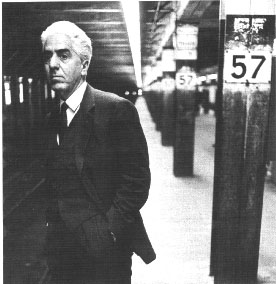Biography
Afro was born in Udine in 1912. In 1928, at just sixteen years of age, he showed his work along with that of his brothers Dino and Mirko, in the first and only Exhibition of the Friulian Avant-Garde.
In 1930, thanks to a scolarship from the Marangoni Arts Foundation in Udine, Afro had the opportunity to go to Rome with his brother Dino and acquaint himself with the capital's art world.

In 1931 he began partecipating in different exhibition of the Arts Union and in 1933 at the Galleria del Milione in Milan, along with Friulian artists Bosisio, Pittino and Taiuti. Afro subsequently moved to Rome.
In 1935 he partecipated in the Rome Quadriennale, and in 1936 at the Venice Biennale, where he exhibited again in 1940 and 1942.
After partecipating in the activities of the School of Rome, creating several mural paintings and engaging in the temporary resurgence of Neo-Cubism, Afro travelled to New York in 1950 and began a twenty-year collaboration with the Catherine Viviano Gallery. The different cultural climate and the diversity of the American art scene of the period made a strong impression on the artist, who reinterpreted them in his own, highly personal fashion.
In 1955 he partecipated in the first Documenta at Kassel, in the Quadriennale and in the exhibition:
The New Decade - 22 European Painters and Sculptors, which travelled throughout the U.S.A.
By this time, Afro had achieved an international reputation and in 1956 won the prize for best italian
artist in the Venice Biennale.
In 1958, he joined Appel, Arp, Calder, Matta, Mirò, Moore, Picasso and Tamayo in decorating the new UNESCO headquarter in Paris, creating a mural entitled The Garden of Hope.
1959-60 saw a continuation of his work at an international level: he was invited to Documenta II in Kassel and won the first prize at the Carnegie Triennial in Pittsburgh and the Italian prize at the Solomon R. Guggenheim Museum in New York.
In 1961, Guggenheim curator James Johnson Sweeney published a monograph on his work. In this years he had one-artist exhibition at M.I.T. in 1960; at the Galerie de France in Paris and the Galleria Blu in Milan in 1961; in 1964 and 1965 at the Galerie Im Erker in St.Gallen, the Galerie Räber in Lucerne and the Günther Franke Gallery in Munich. In 1969-70 a survey exhibition travelled to the Kunsthalle in Darmstadt, the Nationalgalerie in Berlin and the Palazzo dei Diamanti in Ferrara.
After the death of his brother Mirko in 1969, Afro suffered from a series of successive health problems. The 1970s saw an increase of his graphic output and a decline in his activities in paintings and exhibiting. Afro died in Zurich in 1976.
The following year, a monograph by Cesare Brandi was published.
In 1978 the Galleria Nazionale d'Arte Moderna in Rome paid him homage in the form of a major retrospective curated by B. Mantura.